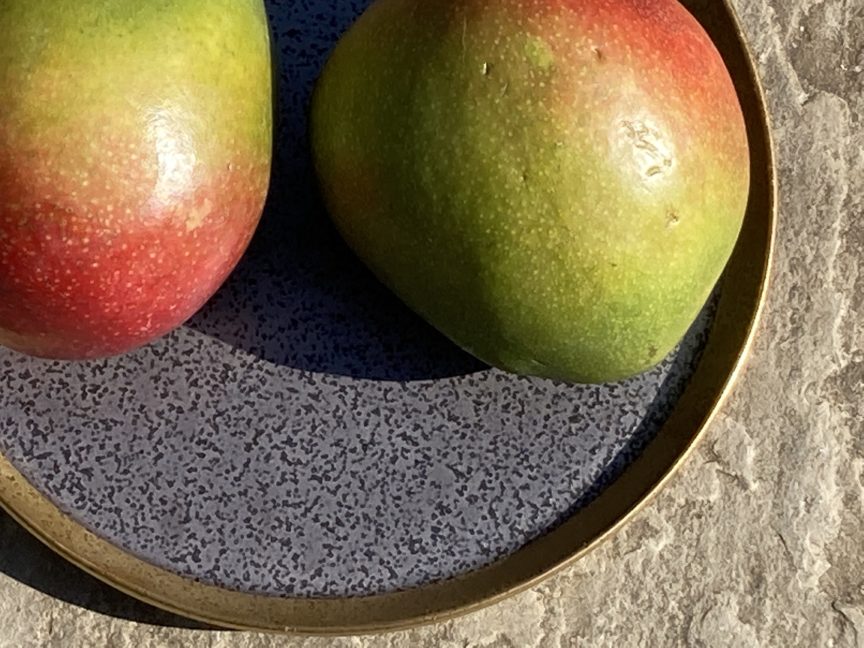Delicious, nutritious and hailed the ‘King of fruit’, sweet golden mangoes are among the most popular fruits in the world…
Mangoes have been enjoyed for around 5,000 years – not just for their sweet taste and chewy texture but also for their rich cultural history. Originating from India, it’s said that Buddha found rest under a mango tree, and the fruit is also widely considered a symbol of love and friendship.
Today, more than 400 varieties of mango available worldwide. In the UK, the Kent and Tommy Atkins varieties are commonly found in supermarkets as they tend to last longer without spoiling. The Tommy Atkins variety has red/green/yellow ombre skin with a mild sweet flavour. It’s also pretty fibrous and firm to the touch. Meanwhile, the Kent variety is sweet, succulent and has far less fibrous flesh than its siblings. When ripe, it tends to be softer and a deep orange in colour.
All varieties of the fruit are fibre-rich and nutrient-dense, with many studies linking mango to several health benefits, including improved immunity, eyesight and better digestive health. Mango is particularly high in vitamin C – 76% of the recommended daily amount – which benefits immunity, iron absorption and growth and repair.
Mangoes score 51–56 on the Glycaemic Index, which is considered low or medium, similar to orange juice. It’s recommended that a serving of fruit should contain about 15g of carbs, which is about two-thirds of a cup of diced mango.
Ways to enjoy
Fresh mango is full of flavour and a great taste sensation on its own. But you can also use it in quick and simple recipes to make tasty snacks and drinks:
- Add to smoothies – for a tropical start to the day, try mango (frozen works well) with coconut, papaya or pineapple. Melon and bananas are also a great combination.
- Jazz up your salads – the sweet flesh makes a great addition to a refreshing summer plate.
- Make a sizzling salsa or zingy chutney – tasty dips perfect as side accompaniments.
At their best
While you can find imported mangoes all year round, peak season runs from May through to September. Look for ripe or soon-to-be ripe mangoes – they’ll be slightly soft to the touch with a fruity aroma. Not quite ripe? At home, speed the process up by putting it in a paper bag at room temperature.
Mangos will continue to ripen at room temperature, becoming sweeter and softer over several days. Once soft, store them in the fridge where whole mangoes should last for around five days. You can also look out for frozen or dried mango for a tasty snack (aim for no added sugar varieties).
 All cut up
All cut up
Mango has one long, flat seed in its centre – work around this to get the most out of the fruit. One of the easiest ways is to place the mango stem side up and cut vertically 1/4in from the middle. Do the same on the other side. Next, cut the inside in a grid formation without going through the skin. Finally, using a large spoon, slide it underneath the flesh to detach the skin and scoop out the cubes.
For a simple, summery mango and coriander dressing combine one large diced mango, juice of one lime, 1/3 cup coriander, 1/2 of a jalapeño pepper, 3 tablespoons olive oil, a pinch of salt in a blender and process until smooth. Thin out with water if desired. Recipe courtesy of Brandy O’Neill, Nutmeg Nanny Blog
Nutrition
165g sliced mango contains:
- 107 calories
- 3g fibre
- 25g total carbs (22.5g sugars)
- 1g protein
- 25% daily amount of vitamin A
- 76% daily amount of vitamin C

